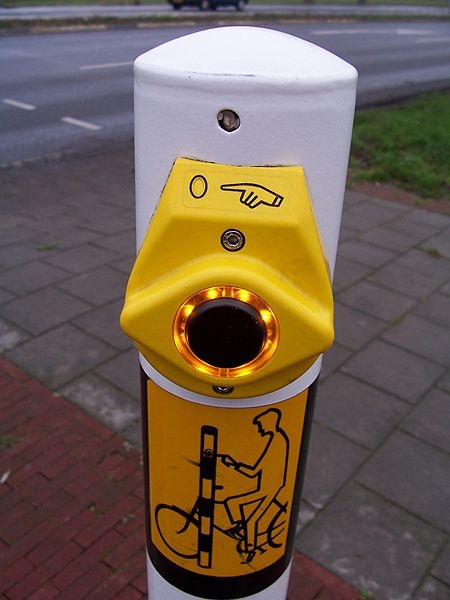Vandal-resistant switches are electrical switches designed to be installed in a location and application where they may be subject to abuse and attempts to damage them, as in the case of pedestrian crossing switches. Vandal-resistant switches located on devices that are outdoors must be able to withstand extreme temperatures, dust, rain, snow, and ice. Many vandal-resistant switches are intended to be operated by the general public, and must withstand heavy use and even abuse, such as attempts to damage the switch with metal tools. These switches must also resist dirt and moisture.
This vandal- and weather-resistant switch is used to request a traffic stop signal
Automated Teller Machines (ATMs) use many vandal-resistant switches
Tamper-resistant automotive ignition switches discourage car theft
Tamper-resistant switch used for corridor and restroom lighting controls in public buildings
In electrical engineering, a switch is an electrical component that can disconnect or connect the conducting path in an electrical circuit, interrupting the electric current or diverting it from one conductor to another. The most common type of switch is an electromechanical device consisting of one or more sets of movable electrical contacts connected to external circuits. When a pair of contacts is touching current can pass between them, while when the contacts are separated no current can flow.
Electrical switches. Top, left to right: circuit breaker, mercury switch, wafer switch, DIP switch, surface mount switch, reed switch. Bottom, left to right: wall switch (U.S. style), miniature toggle switch, in‑line switch, push-button switch, rocker switch, microswitch.
Three push button switches (Tactile Switches). Major scale is inches.
A toggle switch in the "on" position
Triple-pole single-throw (TPST or 3PST) knife switch used to short the windings of a three‑phase wind turbine for braking purposes. Here the switch is shown in the open position.








